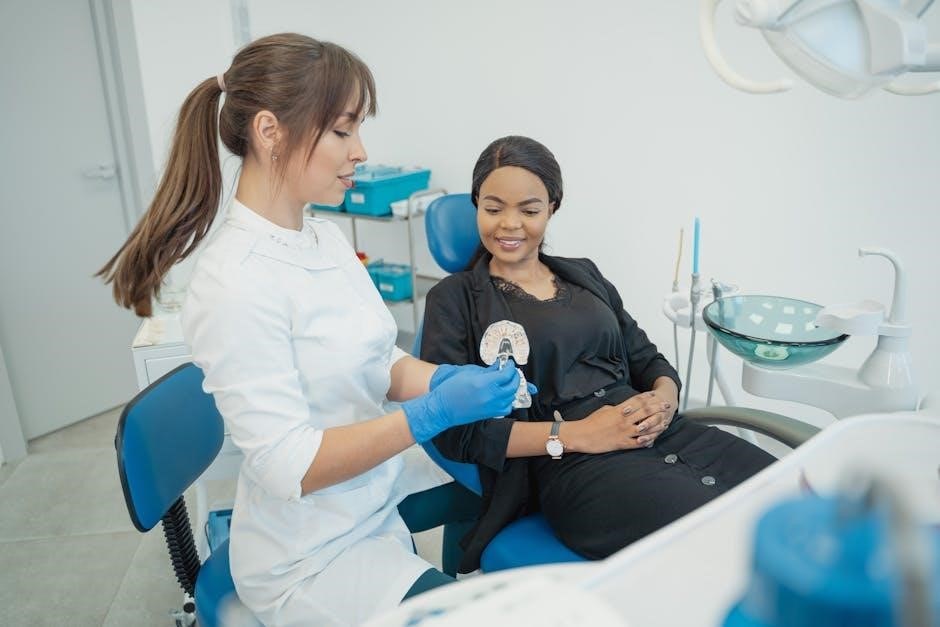Four Corners Activity: A Comprehensive Guide
The Four Corners activity is a dynamic method encouraging engagement, discussion, and critical thinking․ Participants respond to questions or statements by choosing one of four designated corners․ This promotes active participation and collaborative learning․
What is the Four Corners Activity?
The Four Corners activity is a versatile and engaging pedagogical tool designed to foster active learning and critical thinking within a group setting․ Participants are presented with a question or statement, and then choose one of four pre-determined corners in the room that best reflects their opinion or response․ These corners are often labeled with options like “Strongly Agree,” “Agree,” “Disagree,” and “Strongly Disagree,” or with alternative choices depending on the question’s nature․ After selecting a corner, individuals discuss their reasoning with others who have chosen the same corner, promoting dialogue and deeper understanding․ This method encourages participation, reflection, and the exploration of diverse perspectives․
Core Principles of the Four Corners Method
At its heart, the Four Corners method hinges on several core principles that ensure its effectiveness․ Firstly, active participation is paramount, encouraging all individuals to engage directly with the material․ Secondly, critical thinking is fostered as participants analyze statements and formulate reasoned responses․ Thirdly, the method champions inclusivity by providing a platform for diverse opinions to be voiced and heard․ Fourthly, collaboration is central, as individuals share their perspectives within their chosen corner․ Finally, the process promotes movement and interaction, breaking the monotony of traditional learning environments․ These principles combine to create a dynamic and engaging experience․

Implementing the Four Corners Strategy
Successful implementation involves careful preparation, thoughtful room setup, and skillful facilitation․ These steps ensure the activity is engaging, inclusive, and promotes meaningful discussion among all participants․
Preparation: Crafting Effective Questions/Statements
Crafting compelling questions and statements is paramount for a successful Four Corners activity․ Questions should align with learning objectives, sparking diverse opinions․ Prepare a list of suitable questions and statements, increasing in difficulty to sustain engagement․ Opinion-based prompts encourage personal reflection․
Preference-based prompts allow for exploration of individual tastes․ Agreement/disagreement statements stimulate debate and critical analysis․ Ensure questions are clear, concise, and open-ended, inviting thoughtful responses․ Consider multiple-choice questions for structured preference assessments․ Remember to select questions relevant to the topic․
This encourages participants to express their opinions․ Properly crafted prompts will facilitate a dynamic and engaging session․ Ultimately, the quality of the questions dictates the depth of the discussion;
Room Setup: Designating the Corners
Effective room setup is crucial for a smooth Four Corners activity․ Clearly designate each corner with a distinct label․ Options include “Strongly Agree,” “Agree,” “Disagree,” and “Strongly Disagree,” mirroring the spectrum of opinions․ Alternatively, use categories like movie genres (Romance, Action, Horror, Comedy) or other preference-based choices, depending on the question type․
Ensure sufficient space in each corner to accommodate participants comfortably․ Position the corners to allow easy movement and visibility for everyone․ Consider using signs or posters to clearly mark each designated area․ This facilitates participant understanding and engagement․
A well-organized space promotes participation, enabling individuals to readily express their viewpoints by physically moving to their chosen corner․ Ultimately, a thoughtful room arrangement contributes to a successful and dynamic learning environment․
Facilitation: Guiding the Discussion
Effective facilitation is key to a productive Four Corners activity․ Begin by clearly presenting the question or statement․ Allow sufficient time for participants to reflect individually before choosing a corner․ Once everyone has moved, initiate the discussion by inviting individuals from each corner to explain their reasoning․
Encourage respectful dialogue and active listening․ Prompt participants to elaborate on their perspectives and engage with opposing viewpoints․ As the facilitator, maintain a neutral stance and guide the conversation without imposing your own opinions․ Manage the discussion to ensure that all voices are heard, and prevent any single corner from dominating․
Summarize key arguments and identify areas of consensus or disagreement․ This promotes deeper understanding and critical thinking․ The goal is to foster a collaborative environment where participants can learn from each other’s perspectives․

Four Corners Questions: Examples and Categories
Four Corners questions vary widely, spanning opinion-based inquiries, preference-based choices, and agreement/disagreement statements․ These diverse categories allow for engaging participants and stimulating thought-provoking discussions on various topics․
Opinion-Based Questions
Opinion-based questions are designed to elicit personal viewpoints and subjective judgments from participants․ These questions often lack a definitive right or wrong answer, encouraging individuals to share their unique perspectives․ Examples include, “What is your favorite genre of movies?” where options could be Romance, Action, Horror, or Comedy, allowing participants to express their cinematic preferences․ Another example is, “What is your favorite morning beverage?”, offering choices like coffee, tea, juice, or water․ Such questions foster dialogue as participants explain their reasoning and engage with differing opinions․ These questions are a great way to initiate conversation and understand varied viewpoints within a group setting․
Preference-Based Questions
Preference-based questions delve into individual inclinations and choices․ They are designed to uncover personal favorites and tastes, making the Four Corners activity more engaging․ Examples might include questions like, “Which season do you prefer?”, with corners representing Spring, Summer, Autumn, and Winter․ Another could be, “Which sport do you enjoy most?”, offering choices like basketball, soccer, swimming, or tennis․ These questions allow participants to reveal their preferred activities and interests․ By moving to their chosen corner, individuals visually represent their preferences and can then discuss why they made that particular selection․ This fosters understanding and connection within the group․ These questions help build community by highlighting shared interests․
Agreement/Disagreement Statements
Agreement/disagreement statements present participants with assertions related to a topic․ Corners are labeled with options like “Strongly Agree,” “Agree,” “Disagree,” and “Strongly Disagree․” Participants choose the corner that best reflects their stance on the statement․ This variation encourages critical evaluation and the articulation of viewpoints․ For example, a statement could be, “Technology improves communication,” or “Homework is essential for learning․” After selecting a corner, participants discuss their reasoning with others who share the same viewpoint․ This interaction fosters deeper understanding and exposes individuals to diverse perspectives․ It promotes respectful discourse even when opinions differ․ This allows for a deeper exploration of complex issues․ Agreement/disagreement statements are beneficial for facilitating debates․

Benefits of Using Four Corners
Four Corners fosters active participation, encouraging all learners to engage․ It promotes critical thinking through viewpoint consideration․ It builds community by creating dialogue and collaborative exploration of ideas․
Encouraging Active Participation
The Four Corners strategy inherently compels active participation from all individuals involved․ Unlike traditional lecture-based settings where some students may remain passive, this activity requires each participant to physically move and publicly declare their stance on a particular question or statement․ This movement itself is a form of engagement, breaking the monotony and fostering a more energetic environment․
Furthermore, the subsequent discussions within each corner ensure that everyone has an opportunity to voice their opinions and hear diverse perspectives․ The act of choosing a corner and explaining that choice to peers cultivates a sense of ownership and responsibility, leading to increased engagement and a more inclusive learning experience for all participants․
Promoting Critical Thinking
Four Corners elevates mere opinion sharing to a realm of critical thinking․ Before selecting a corner, participants must carefully consider the presented question or statement, analyzing their own beliefs and values in relation to it․ This reflective process encourages introspection and a deeper understanding of their own perspectives․
Moreover, the subsequent discussions within each corner expose participants to diverse viewpoints, challenging them to defend their chosen position and consider alternative arguments․ This exchange of ideas fosters intellectual agility, prompting participants to refine their thinking and potentially modify their stance based on new information or persuasive reasoning, thus sharpening their critical thinking skills․
Building Community and Collaboration
The Four Corners strategy inherently fosters a sense of community and collaboration among participants․ By physically moving to a designated corner based on their response, individuals immediately identify with others who share similar viewpoints, creating instant bonds and shared understanding․ This spatial grouping encourages dialogue and interaction within each corner․
Furthermore, the subsequent discussions necessitate active listening and respectful engagement with differing perspectives․ Participants learn to articulate their own ideas clearly while also considering the viewpoints of others, fostering empathy and mutual respect․ This collaborative environment strengthens interpersonal connections, promoting a sense of belonging and shared purpose within the group, ultimately building a stronger community․

Variations and Adaptations of Four Corners
The Four Corners activity is highly adaptable․ Variations include Four Corners Debate, transforming it into a structured argument, and using it as an icebreaker for quick, engaging introductions․
Four Corners Debate
Elevate the Four Corners activity into a structured debate format by introducing controversial statements․ Assign corners as “Strongly Agree,” “Agree,” “Disagree,” and “Strongly Disagree․” Participants choose their corner based on their stance and then engage in reasoned arguments supporting their position․
This variation promotes critical thinking, persuasive communication, and respectful discourse․ Encourage students to listen to opposing viewpoints and articulate their own with clarity․ By integrating research and evidence, students can deepen their understanding of the topic and refine their debating skills․
The Four Corners Debate encourages civil discourse and intellectual engagement, offering a dynamic platform for exploring diverse perspectives․
Four Corners for Icebreakers
Utilize the Four Corners activity as an engaging icebreaker to foster connection and camaraderie․ Pose lighthearted, preference-based questions such as, “What’s your favorite season?” or “Which movie genre do you prefer?” Designate each corner with a corresponding answer choice․
Participants move to the corner representing their choice, providing an instant visual representation of group preferences․ This encourages interaction and allows participants to discover shared interests․ Prompt further conversation by asking individuals in each corner to explain their selections briefly․
Four Corners icebreakers create a relaxed and inclusive atmosphere, promoting communication and building rapport among group members․ This is great for primary students!





